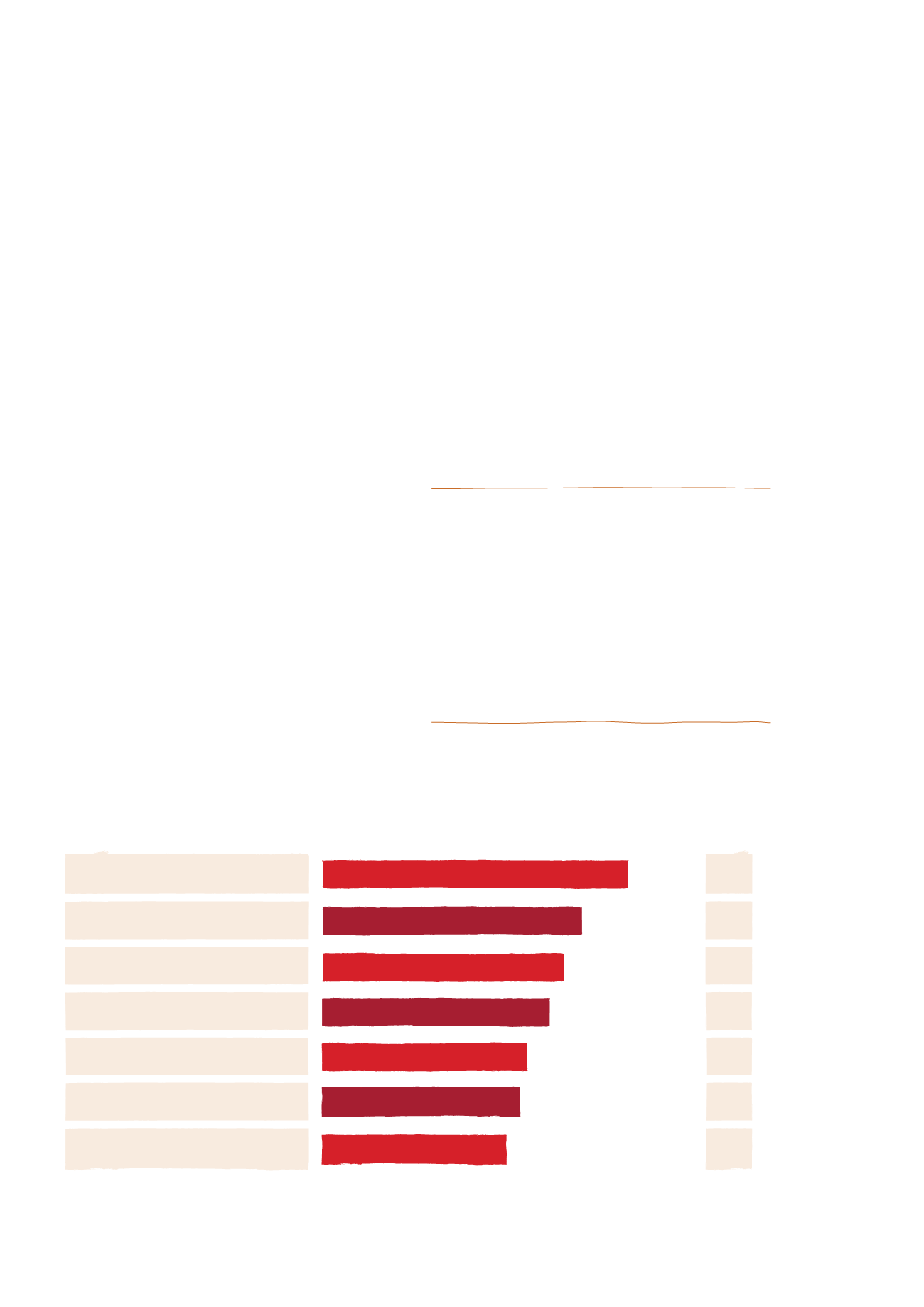

Chris Simpson was working for KPMG when he was
seconded to North East Arnhem Land. ‘It definitely
demonstrated the magnitude of the problem
of Indigenous disadvantage,’ he said, ‘which is
something that I knew theoretically but didn’t really
appreciate until I got there.’ Trish Clancy from BCG
explained that her secondment gave her a greater
insight into the challenges in remote Indigenous
communities: ‘So many Australians have no idea
what remote Indigenous Australia is really like—
even just living in a town with no bank.’
For Tracey Benson, her very idea of ‘remoteness’
was challenged after visiting the Cummeragunja
Mission in Victoria: ‘Here was a community in
a relatively populated area, but it was remote
because it fell between the cracks of services
between states.’ Other secondees had their
perceptions changed in a positive way. Ben Tan
explained: ‘I didn’t realise how much had been
achieved in Goulburn Murray. The Yorta Yorta
people have achieved this huge amount in terms
of development of a civil society and a community,
assets and infrastructure.’
Bonnie Carter from the Department of Defence
also experienced a positive change in view. ‘I was
of the understanding there were a lot of Elders
in the community—I didn’t know there were so
many young people, the young leaders, really
driving change.’
This increase in awareness usually brings
greater
understanding
of Indigenous culture and the
complexity of the challenges Indigenous people
face. Issues and traditions such as land rights,
Welcome to Country, education equality, and drug
and alcohol addictions suddenly take on a deeper
significance. Melanie Evans from Westpac was
seconded to the remote town of Coen in Cape
York, Queensland. ‘I didn’t understand the fact that
non-Indigenous children were home-schooled or
went to private schools and that the curriculum
was fundamentally different for Indigenous children
in the community I was working in. Having that
“a-ha” moment when I arrived made me appreciate
how much I needed to learn.’ The experience
also gave Melanie a better understanding of
Indigenous culture:
I’ve learnt about, and now respect, the relationship
between connectedness to country and land
rights. There are a whole range of fundamental
beliefs that Australians who aren’t as aware might
incorrectly read as power and greed. Whereas
someone who’s done a secondment, who’s
connected with the Indigenous community and
therefore understands that underlying principle
of connectedness to country, has a fundamentally
different view. There’s a better understanding
about the reasoning and complexity behind
some of these issues.
Source: Jawun Alumni Survey, 2014
FIGURE 6:
PERCENTAGE OF FORMER SECONDEES REPORTING AN IMPROVEMENT IN KEY COMPETENCIES
AS A RESULT OF THEIR SECONDMENT
Flexibility and adaptability
Tolerance of ambiguity
Self-awareness
Interpersonal engagement skills
Emotional sensitivity
Resilience
Self-confidence
76%
64%
60%
56%
51%
49%
46%
14 JAWUN
2015 LEARNINGS AND INSIGHTS


















